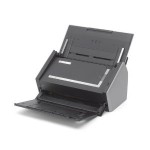The Death Spiral of America’s Big Law Firms
The Atlantic: “How some of America’s top law firms devoured profits before the Great Recession, got too fat, and are now suffering the consequences. . . . During the early and mid aughts, firms built unsustainable business models that survived off the froth flying from Wall Street. Now, many have become too bloated to change course and adapt to a new era in business. . . . How did firms set themselves up for a fall? To put it bluntly, they got fat. . . . Firms were able to finance their growth and maintain their obscene profitability by pushing through through large yearly rate increases that met little resistance from clients. When the recession hit, these slow and flabby firms were broadsided. Business dried up. Clients balked at the annual rate hikes, and many started demanding discounts. Most firms maintained profits by laying off associates and staff.”
For more on this subject read an article in Bloomberg Businessweek called “Law Firms’ White-Shoe Blues,” which says:
” a dozen large and prominent partnerships have called it quits in the past decade. . . . There’s more at work here than the Great Recession. Inept management and the weakness of the partnership model have also played crucial, if lesser known, roles. And as unsettling as this shakeout will be for employees of many large law firms, it’s one that is overdue. . . . Part of the problem is that the partnership structure—in which the owners jointly make all the major decisions, including how to divide the profits—works better in smaller, more stable firms with simpler finances and more modest levels of acquisitiveness. Partnership does not nurture broad-minded managers skilled in running sizable operations. . . . the industry suffers from excess labor. The number of people with law licenses grew from 212,600 in 1950 to 1,225,000 in 2011—a sharp change from a ratio of one attorney for every 709 Americans to one for every 257. Forty-five thousand newly minted attorneys become available every year in a field with only 25,000 job openings”



 Scanner Advice: The scanner I now buy and recommend you buy is the Fujitsu ScanSnap iX500 Scanner for PC and Mac. Amazon sells this scanner for $400 – $450 (Amazon varies the price). This is a smoking deal – you get a 25 page per minute color personal scanner that comes with Adobe Acrobat X standard software. Acrobat is needed so that scans open automatically as pdf files. We love this scanner. It’s the size of a shoe box. It has a 50 page sheet feeder and can scan business cards and color photos. For more about this scanner real my article called “
Scanner Advice: The scanner I now buy and recommend you buy is the Fujitsu ScanSnap iX500 Scanner for PC and Mac. Amazon sells this scanner for $400 – $450 (Amazon varies the price). This is a smoking deal – you get a 25 page per minute color personal scanner that comes with Adobe Acrobat X standard software. Acrobat is needed so that scans open automatically as pdf files. We love this scanner. It’s the size of a shoe box. It has a 50 page sheet feeder and can scan business cards and color photos. For more about this scanner real my article called “